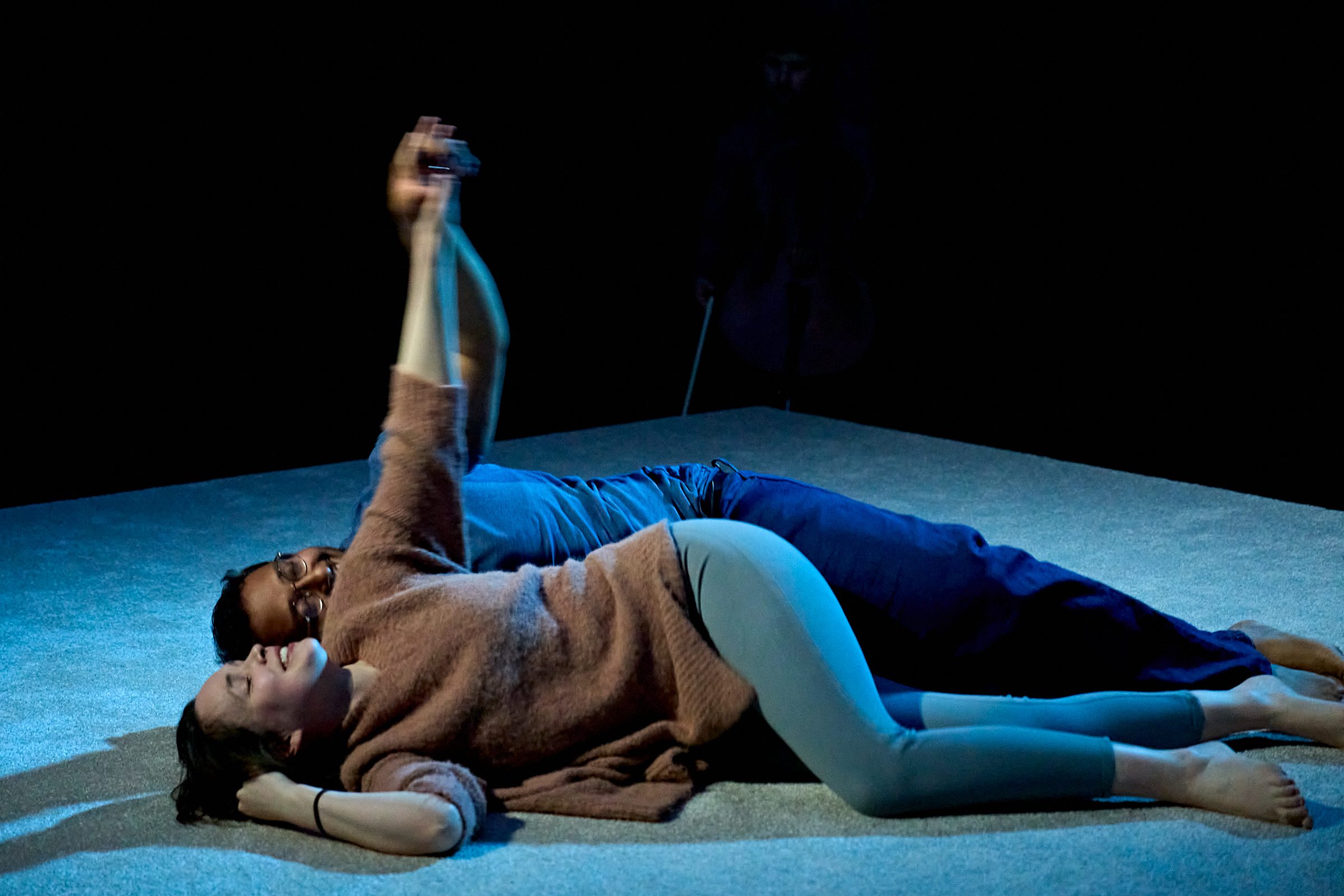The stage version of Girl With a Pearl Earring transferred this week to the West End’s Theatre Royal Haymarket, where it’s booking for a limited season until 1 November (See 1st Night Photos, 30 Sep 2008). Adapted from Tracy Chevalier’s best-selling novel, which has also been adapted for the screen, it tells the story behind the creation of painter Johannes Vermeer’s most famous work.
In the 2003 Hollywood film version, Colin Firth played Vermeer, with Scarlett Johansson starring as his servant girl Griet (the inspiration for the painting). In David Joss Buckley’s stage version, directed by Joe Dowling, the parts are taken by Adrian Dunbar and Kimberley Nixon (pictured). The cast also features Lesley Vickerage as Vermeer’s jealous wife Catherina, Niall Buggy as his lascivious patron, Sara Kestelman, Maggie Service, Jonathan Bailey and Flora Spencer-Longhurst.
First night critics were pretty much unanimous in their assessment of the play as being “civilised” and “well acted” but lacking any real sense of purpose. And Buckley’s “conventional” script populated by “cheap gags” failed to placate the poisoned pens, as some critics went for the jugular with their dismissal of the story as the “stuff of which TV soaps are made”. However, Kimberley Nixon and Adrian Dunbar escaped relatively unscathed, Nixon’s “sweetly innocent” Griet and Dunbar’s “perfectly decent” Vermeer proving a match for Johansson and Firth.
Michael Coveney on Whatsonstage.com (two stars) – “What is the point of this show? It’s not terrible, but it’s hardly exciting … This is a diminution of a prose work of art which is vocalised in the narrative of a young serving girl in the 1666 household of Jan Vermeer in Delft. She is assigned as a slave, becomes enamoured of painting technique and the artist’s mystery, and is removed as a threat to domestic stability. The momentum lies in the slow thrum of her artistic and sensual arousal. There’s absolutely no sense of that in Joe Dowling’s plodding production, which stakes out the narrative in a literal art gallery of Vermeer references, translucent lighting and cheap gags … Kimberley Nixon … is sweetly innocent without ever reverberating as a conduit of artistic temperament or indeed her own sentiments … Adrian Dunbar as Vermeer, oddly confined by a hesitant gait and a terrible wig, soft-pedals the troubled painter into dull non-entity.”
Michael Billington in the Guardian (two stars) – “Theatre, if it is to survive, needs to be abundantly theatrical. Which is a polite way of saying I see little future for this kind of workmanlike reduction of an existing novel. Tracy Chevalier’s book is an immensely subtle, compelling, first-person narrative about the obsessiveness of genius and a girl’s disruptive impact on Vermeer’s household: in David Joss Buckley‘s adaptation it becomes a conventional, thwarted love-story … Adrian Dunbar is perfectly decent as Vermeer, Kimberley Nixon endows Griet with hungry curiosity, and Sara Kestelman is starched wisdom as the mother-in-law. Peter Mumford‘s sets and lighting please the eye, and Joe Dowling shows his directorial skill in giving the fragmented scenes an architectural shape … Yet again, adaptation proves Jonathan Miller’s point about giving fictional characters an ‘impertinent visibility’.”
Benedict Nightingale in The Times (two stars) – “There’s not much of a story here. The proliferating women in Vermeer’s household, from his envious daughter to his jealous housekeeper to the stern grandma played by Sara Kestelman, all find her (Griet) disconcerting. So do the butcher’s boy, who wants to marry her, and Van Ruijven, the painter’s rich, appreciative but boozily lascivious patron. This last isn’t much of a role for the usually excellent Niall Buggy, since his prime task is to salivate over Griet while coarsely cackling away, but then there isn’t much depth or complexity to any of the characters … Why doesn’t Buckley follow up on the interest that he generates in the divisions between Protestant (Griet) and Catholic (Vermeer) in 17th-century Delft? But, although Joe Dowling’s production stays earthbound, he does get an appealing performance from Nixon. Her Griet is an intelligent, dignified, aloof young woman, whose misfortune is to have others project their feelings onto her.”
Charles Spencer in the Daily Telegraph – “I suppose I ought to be offering at least a muted welcome to this adaptation of Tracy Chevalier’s novel, which has sold more than three million copies worldwide since it was published in 1999. The play is civilised, well-acted, and passes a couple of hours harmlessly enough. But somehow – and the same goes for the book and the movie – it left me feeling unsatisfied, even ripped off … It’s only fair to add, however, that this stage version marginally improves on both book and film. David Joss Buckley‘s adaptation gets deeper into the supporting characters than Chevalier’s novel, which was narrated in the first person by Griet, allowing them to express their thoughts and feelings in soliloquies. And, though she is neither as sexy nor as disconcertingly beautiful as Scarlett Johansson is in the film, Kimberley Nixon brings far more vitality, warmth and depth of feeling to the role of Griet.”
Nicholas de Jongh in the Evening Standard (two stars) – “Girl With a Pearl Earring … turns imaginative art history theorising into the stuff of which TV soaps are made … Buckley … lays everything on with a heavy palette and thick brush, though Kimberley Nixon’s impressive Griet maintains her self-possessed cool. The tense, impoverished Vermeer household, from Lesley Vickerage’s jealous wife Catharina and scheming daughter Cornelia to Sara Kestelman’s commanding, manipulative mother-in-law and Niall Buggy’s gross patron, Van Ruijven, who lusts for Griet in living and portrait form, are one-dimensional … Dunbar’s Vermeer, an inappropriate combination of the professorial and avuncular but little more. The painter touches Miss Nixon’s attentive, pertly loquacious Griet with no serious ardour. The pain the poor girl expresses when her ear is symbolically pierced by Vermeer so she can wear his wife’s earring for the portrait is merely that of another female exploited by male, artistic selfishness.”
– by Theo Bosanquet










